BOULDER AND PUEBLO, Colo. — A car exploded, and then another. All within 48 hours in the early summer of 1974. The explosions killed six activists and severely injured a seventh. They’ve come to be known as Los Seis de Boulder – the Boulder Six.
Federal and local law enforcement investigated the bombings, as did a federal grand jury. But no one was ever charged.
The official theory officers proposed is that those who died accidentally blew themselves up. But 50 years later, the case remains shrouded in mystery.
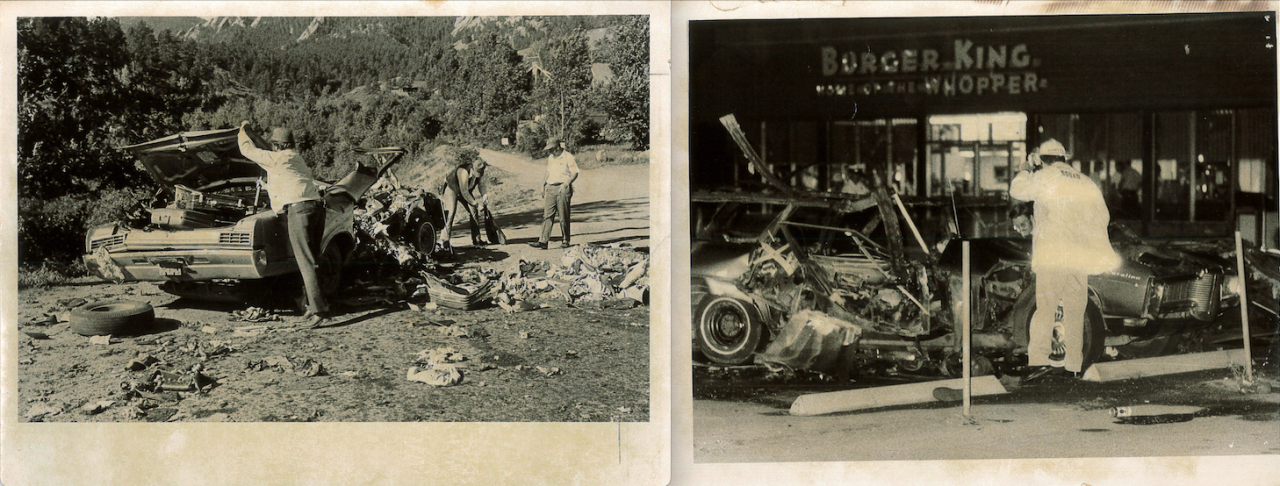
Juan Espinosa and his wife Deborah knew Los Seis. They protested together on the University of Colorado Boulder campus where many of them were part of the student group United Mexican American Students.

The Espinosas told Denver7 the official reports from law enforcement still have them asking questions.
"All they have is their lame theory that these people killed themselves by accidentally arming a bomb, twice in 48 hours, two different carloads? Hard to believe,” said Juan.
“I've always said that they didn't have to die. What I was thinking was that they were led,” Deborah said.
Activists like them were protesting under the watchful eye of law enforcement, including local police and the Federal Bureau of Investigations.
But if they were being surveilled, why weren’t the explosions stopped, or the crimes solved?
“That is the question that has haunted me all these years. And I've always felt like there was a setup,” Deborah said.
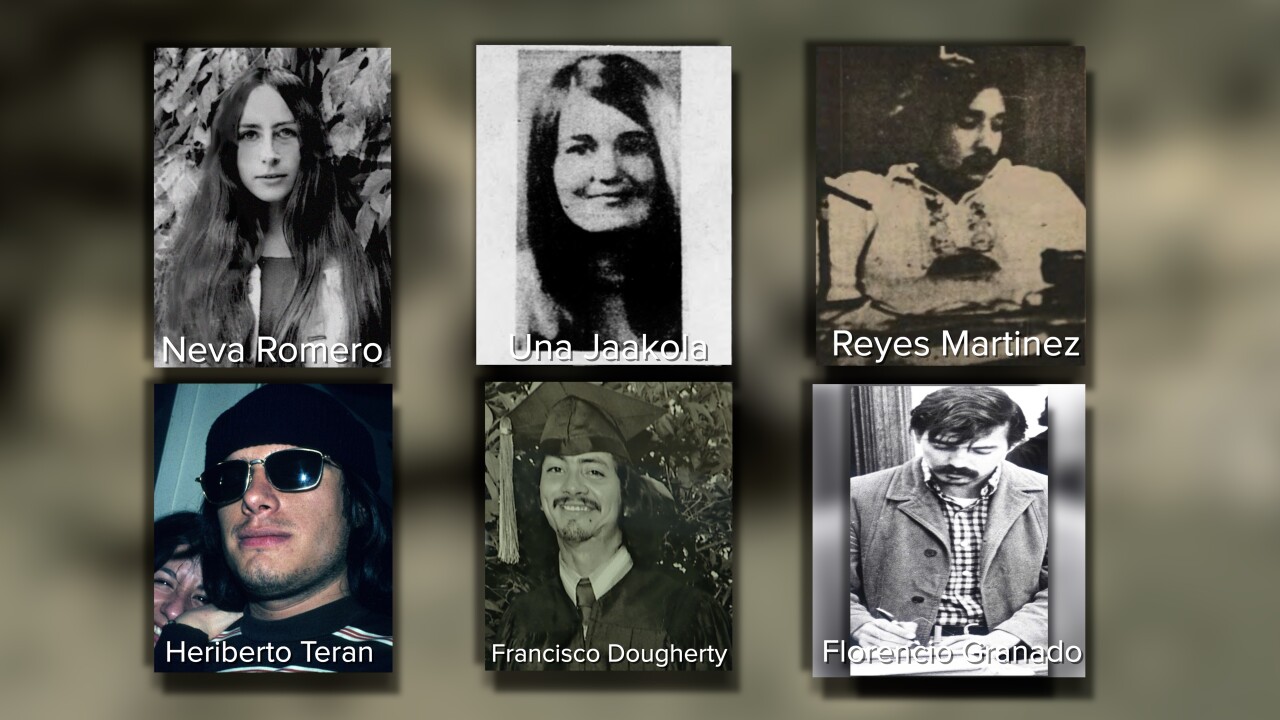
Denver7 360 | In-Depth News
Los Seis de Boulder: Remembering six slain Chicano activists
To start piecing together what might have happened, the Espinosas said we need to go back in time.
“I want to go back to 1973, in the spring: March 17,” Juan said. "There was what I call the police raid on the Crusade for Justice.”
Juan was a journalist. He heard on the radio that a Denver police officer shot and killed Luis “Junior” Martinez, a dance teacher with the Crusade for Justice – a school and activist group created by Chicano civil rights activist Rodolfo “Corky” Gonzalez.
"I just went straight to the Crusade and I started taking pictures,” he said.


Outrage over Martinez’s death led to a shootout between police and Crusaders. An unexplained explosion destroyed part of an apartment building on the Crusade for Justice campus.
"There was a wall missing. A lot of people were beaten that night and hauled off to jail,” Deborah said.

"There had been evidence of the brutality as we were growing up. But now it was very violent, very violent. People were dying,” she said.
Juan said it was a wake up call that “there were real enemies to this kind of movement that we’re involved in.”
“You can understand how there was talk of retaliation,” Deborah said.

A year later, almost to the day, two small explosions damaged the CU Boulder police headquarters and the Boulder County Courthouse.
“No one was ever hurt in any of those smaller bombings. It's minor damage,” Deborah said.
But the Federal Bureau of Investigations (FBI) and the Bureau of Alcohol, Tobacco and Firearms (ATF) started investigating, and suspected Chicano student activists were responsible.
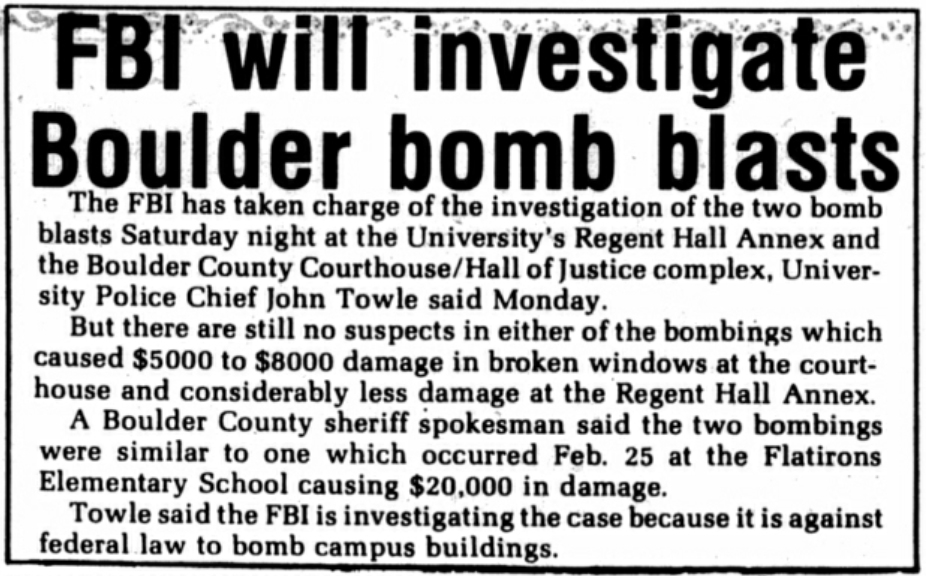
At least 10 bombs went off in Denver and Boulder in 1974, according to the Global Terrorism Database. Most of the bombs damaged public buildings like schools, police stations and courthouses.
Meanwhile on the CU Boulder campus, tension was building.
"We were the new students on campus,” Deborah said. “They expected us to assimilate, to be quiet, go to our classes. And that was not us.”

It was a time of protest – against the Vietnam War and in support of civil rights for African Americans, American Indians and Mexican Americans, also known as Chicanos.
"We were students of the movement. We were exposed to a lot of different philosophies," Deborah said.
"There was always talk of revolution," she said. It wasn't necessarily divisive, but there were many factions including communists, internationalists and socialists. There was a debate among activists about whether to subscribe to non-violence or "whatever force necessary."
"We were in the non-violent camp. I mean, we didn't feel that we would gain any public support through violence," Juan said. "All of the actions that we did were legal, peaceful protest."

Juan and Deborah were among the group of students calling for more Chicanos to gain access to higher education. CU Boulder students created the group United Mexican American Students (UMAS) in 1968. By the 1970s, they had increased their numbers dramatically.
“When you go from a handful, eight students, that started UMAS, and in about three years, it was up to 1,000 students. I mean, that's rapid growth, and we were pressing for more growth,” Juan said.
That growth and the activism that came with it drew attention, and worry, from university administrators and law enforcement officers, according to hundreds of pages of documents compiled by CU Boulder library archivists.
In the years before the deadly car bombs, police on the CU Boulder campus observed student protests and wrote up reports on incidents of property destruction, such as small fires and a dynamite explosion, according to documents from the CU Boulder Rare and Distinctive Collections archive.
"We knew they were watching us, but they were always watching us,” Deborah said. “We couldn't see where it was going to lead.”
Chicano students suddenly lost their financial aid.
“They were couch surfing, living with friends,” Juan said.
The UMAS president Ricardo Falcón was pushed out of his position, and was later murdered while traveling through New Mexico.
Many favorite professors were fired and activists banned from campus.
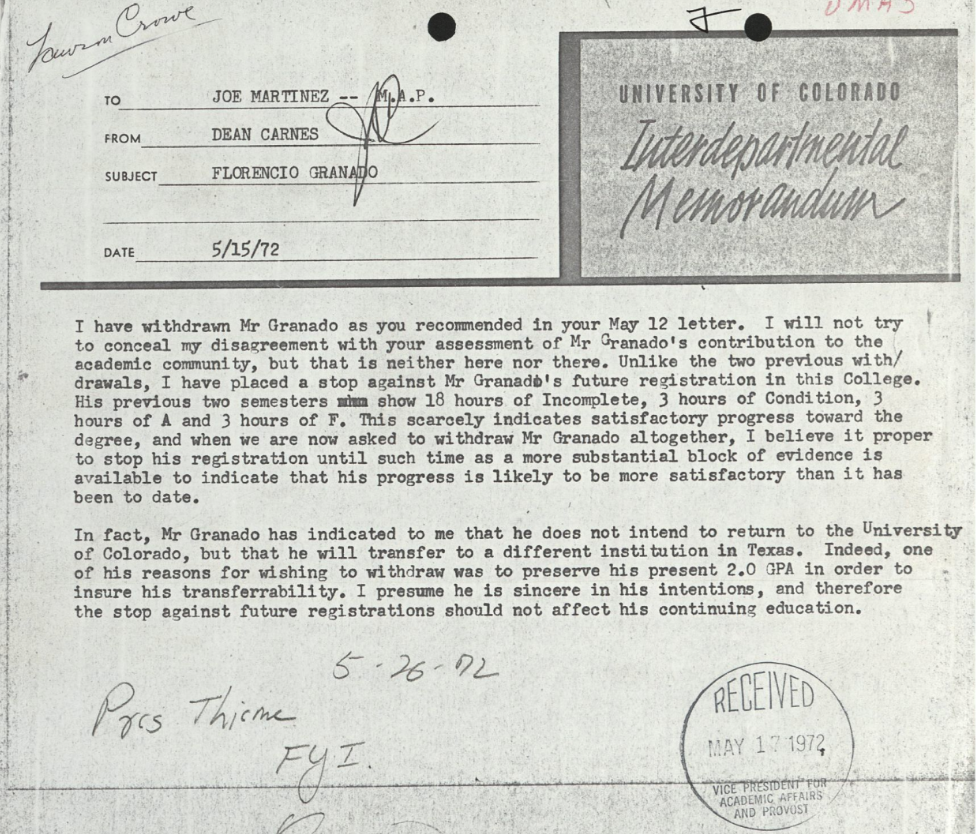
Then in the spring of 1974, some students started to blame their problems on the current UMAS president Joe Franco.
"We felt there was money missing, money that was misspent,” Juan said. “Joe Franco was going along with the university to limit the growth of UMAS.”
So, Juan and Deborah brought together a small group of students to plan a protest. They decided to occupy a campus building: Temporary Building 1, also known as TB-1.
Their plan was simple.
"Eight of us go in. We'll barricade ourselves there,” Juan said. The student activists were used to law enforcement responding quickly. All of the protesters expected to be arrested.
“But the strategy didn't work because they didn't come and arrest us,” Juan said.

The semester ended and their protest dragged on.
“The campus was deadly silent,” Juan said. “I graduated that year. I didn't attend my commencement because we were occupying this building.”
The protestors knew they were being monitored by university administrators and law enforcement.
“The question always was, well, why didn't the university deal with us within the first few days? They just ignored us. And there has to be a reason for that,” Deborah said.
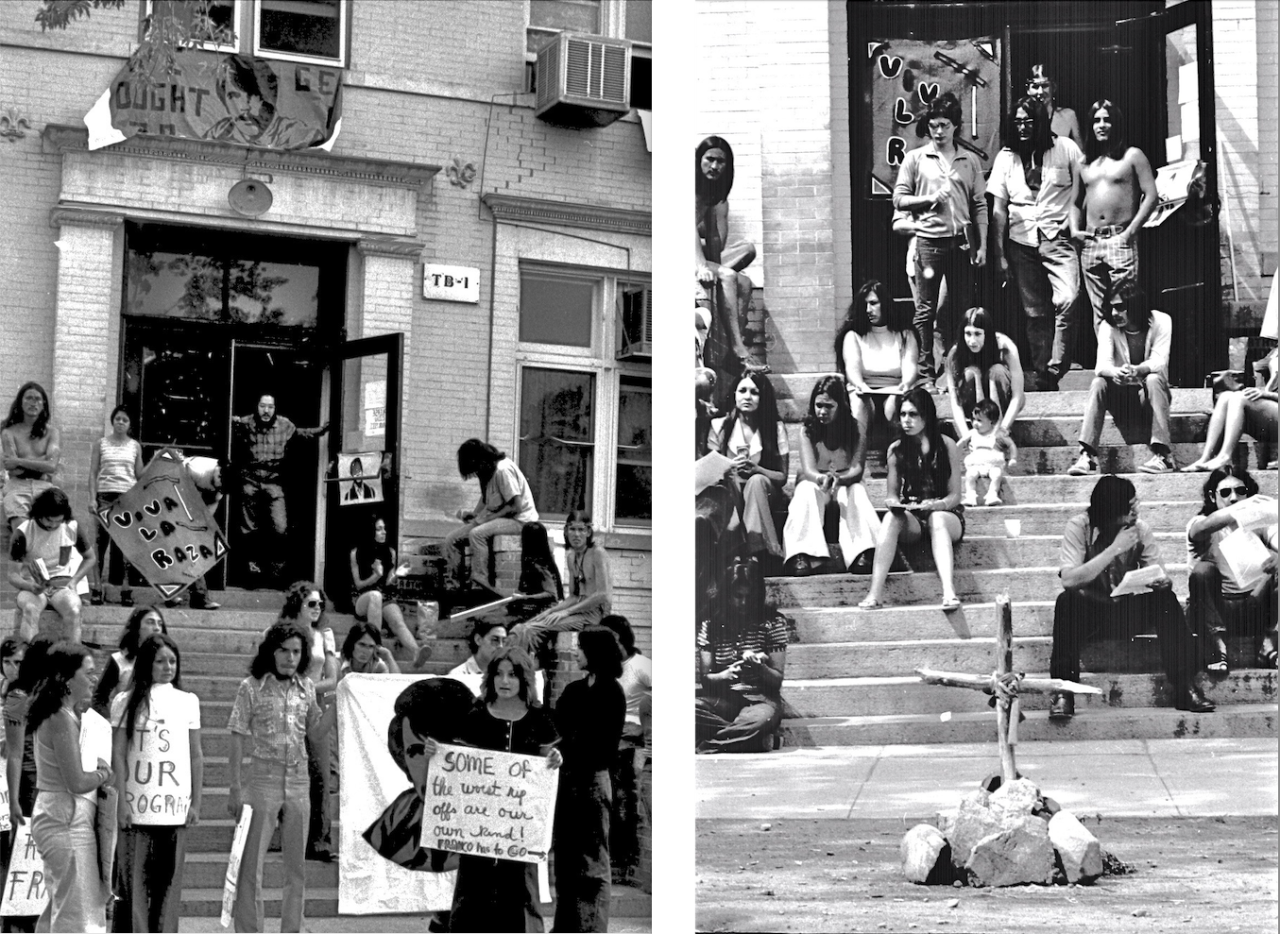
After weeks of waiting, she said, morale dropped.
“It was too defeating to just pack up and go home. That was out of the question. We were there for the long haul, whatever it took,” she said.
In retrospect, the Espinosas believe the drawn out, exasperating experience was intentional.
“If this was planned out between the university administration and the FBI, it went according to plan,” Juan said. “That they would push us into a corner where we would react in some way. And essentially, that's kind of what happened.”
Their protest ended 19 days later, following the two deadly explosions.

To this day, the Espinosas don’t believe their friends set the bombs themselves. They remain frustrated that the federal investigation never led to clear evidence or prosecutions for what happened.
They continue to weigh various theories for why the bombs went off and killed Los Seis.
Whether they had the dynamite themselves or were targeted and killed, the Espinosas said that ultimately, they stood for an important cause.
"They died so that more kids could go to school,” Deborah said. “That is their legacy, whether you call them a terrorist, or activists, or revolutionaries, or victims. It was all for education.”

Boulder
CU Boulder scholarship honors activists killed by car bombs 50 years ago
A special thanks to the following institutions for providing archival materials: University of Colorado Boulder Rare and Distinctive Collections, CSU Pueblo Archives and Special Collections, Colorado Historic Newspapers Collection, Denver Public Library Special Collections, Carnegie Library for Local History, History Colorado — Juan Espinosa Collection, The Freedom Archives, Boulder Daily Camera
Photojournalist Drew Smith contributed to this report.



